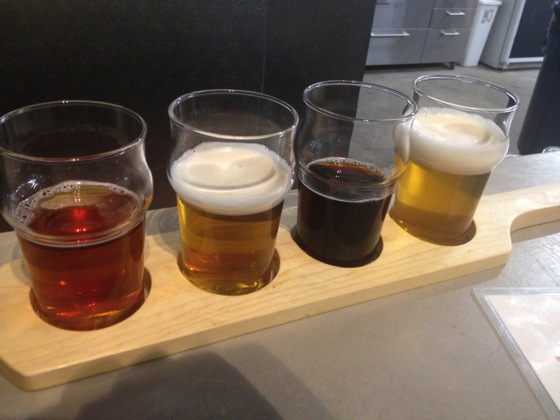It doesn’t matter how old you get, there is always something new to learn. Sometimes these new things are words or concepts you have heard all your life, but perhaps you never understood. Learn Something New is a series that will highlight some of the things I learn, big and small in the coming days. — Douglas
Cask Ale
As many of you already know, I have the tendency to go “Down the Rabbit-hole” whenever I come across something new and interesting. My most recent fascination is cask ales, a particular way of making and serving beer. The recent opening of MacLoed Ale Brewing Co just a few streets away piqued my interest and now I find I am wanting to learn more and more about the particulars of cask ales.
I have often thought about brewing my own beer, but the batch size and (seeming) complexity of beer brewing has kept me away. I have made my own hard ciders, which I described as “brewing on training wheels” as it is much, much ease than beer and lends itself to smaller, 1 gallon, batches rather than the typical 5 gallon batches of beer.
That said, I am fascinated with beer brewing and my 2 trips to the UK have only increased that interest over the years. I have never been a huge fan of standard, mass produced, American beers and seek out microbrews and other limited runs as often as I can. This has made me very interested in cask ales, as they harken back to an earlier, more traditional era of beer making and serving.
I’ll leave a deeper description of cask ales to the links below, but there are 2 important aspects of cask ales over more modern methods. First, cask ales are still very much “alive” in their casks, being unfiltered and unpasteurized, unlike mass produced beers. This means they typically have a lower level of carbonation as they are then pumped from casks rather than using additional CO2 to carbonate and serve them. For me, this results in a much more flavorful, if flatter beer, where you can easily taste all the components of the flavor. Second, cask ales are typically served a relatively warmer temperatures, which I think, again, enhances their flavor and also mouth feel. Cask ales also tend to have lower alcohol levels to the fermenting methods used.
MacLeod Ale Brewing Co will be having a panel discussion on cask ales at the brewery on September 23, 2014. This will be a great opportunity to learn even more.
Cask Ale from Wikipedia
Cask ale or cask-conditioned beer is unfiltered and unpasteurised beer which is conditioned (including secondary fermentation) and served from a caskwithout additional nitrogen or carbon dioxide pressure. Cask ale may also be referred to as real ale, a term coined by the Campaign for Real Ale, often now extended to cover bottle-conditioned beer as well.[1]
The fundamental distinction between real and other ales is that the yeast is still present and living in the container from which the real ale is served, although it will have settled to the bottom and is usually not poured into the glass. Because the yeast is still alive, a slow process of fermentation continues in the cask or bottle on the way to the consumer, allowing the beer to retain its freshness. Another distinction is that real ale should be served without the aid of added carbon dioxide, or “top pressure” as it is commonly known. Common dispensing methods are the handpump, or “by gravity” direct from the cask. Electric pumps are occasionally seen, especially in the Midlands and Scotland. — Wikipedia
More information on Cask Ale:
- England’s Real Ale Renaissance via The Beer Connoisseur Online
- Cask Ale: Draught Beer At Its Best via Craft Beer
- Cask Ale from All About Beer






